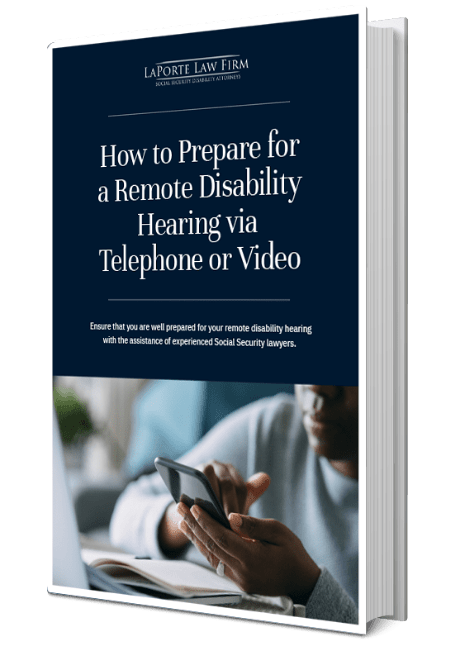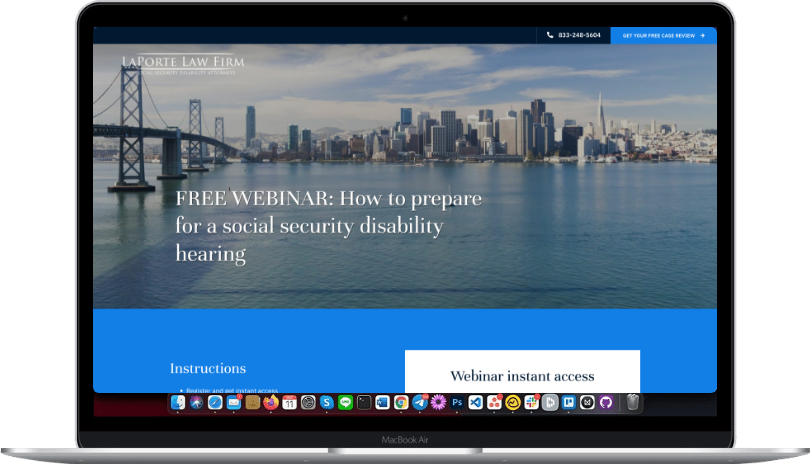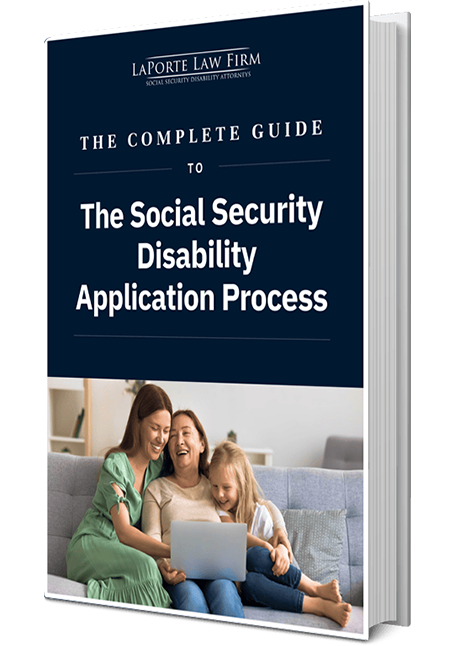
Understanding the Unfavorable Decision
After you attend a hearing with an administrative law judge (ALJ), the judge will issue a written decision. This written decision summarizes your medical record and past relevant work, and explains your severe impairments and their effect on your ability to work. The decision will also contain an analysis of whether or not you can still perform your past work or do any other type of work in the national economy. The ALJ’s decision is based on an in-depth examination of your case, considering all pieces of evidence and arguments presented. The ALJ’s decision may be influenced by the credibility of your testimony, the consistency of your claim with the evidence, and the opinions of medical or vocational experts.
An unfavorable decision is issued when the ALJ determines that you were not disabled at any point since you stopped work. It explains why you are not disabled. The judge may determine that you can still perform your past work or that you can perform other work in the national economy. An unfavorable decision can be issued due to a lack of medical evidence or discrepancies between your claim and the objective evidence.
What to Do If You Receive an Unfavorable ALJ Decision in Your Disability Claim
Fortunately, an unfavorable decision is not final. If you receive an unfavorable decision from an ALJ, you can file an appeal. This appeal may be successful if there are legal errors that occurred during the hearing that would affect the outcome of the case.
Here are the steps you should take if you receive an unfavorable decision in your SSDI claim:
Understand the judge’s decision
When you receive the judge’s unfavorable decision, read it carefully. First, identify the impairments the judge considered when determining if you were disabled. Review the judge’s medical summary to understand what they considered when determining the severity of your condition. Next, review the unfavorable decision’s summary of your testimony and other third-party statements that explain how your disability affects you on a day-to-day basis. Finally, read the judge’s assessment of your past work and the determination if you could perform your past work or any other work. Note down any errors in the unfavorable decision and any evidence that was not considered.
Gather more evidence
Before you file an appeal, it is important to review your medical record to determine if there is any new or missing medical evidence that was not made part of your SSA (Social Security Administration) file. The unfavorable decision contains an index listing of all the medical evidence reviewed in your case. You can also call your local SSA Office of Hearing Operations to obtain the entire copy of your file. Review the file to determine if there is any missing information. New or missing records can support your claim.
During the appeal, the appeals council will consider new evidence if there was a good reason it was not previously submitted to the judge at the time of the hearing if it relates to the period on or before the date of the unfavorable decision, and there is a “reasonable probability” that the additional evidence will change the outcome of the decision. This evidence may be a new test or examination done that demonstrates the severity of your disability. It could also be opinion evidence from your treating physician that explains the limitation of your disability since you stopped working.
If you have new evidence to submit, you can tell the appeals council you have new evidence to submit when you file your appeal. After you file your appeal, you have 25 days to submit additional evidence.
File an appeal
If you disagree with the unfavorable decision and believe that it contains legal errors, you can file an appeal. The appeal is filed with the appeals council, who will review the decision to determine if there were mistakes made in the decision or at the hearing that affected the outcome of your case.
Prepare for another hearing
If your appeal is unsuccessful, the appeals council will dismiss the case and decide not to review it, or deny the appeal. This happens in a vast majority of claims (in 2023, 83% of claims were denied and 3% were dismissed). If your appeal is successful, the appeals council may approve the case and calculate your benefits or remand the case. If your case is remanded, it will be sent back to the ALJ for another hearing. To get more information on how to prepare for another hearing, check out our article on remanded disability cases.

Reapply for disability benefits
If you decide not to file an appeal, you can file a new application. A new application is different from an appeal. In a new application, the SSA will only consider your disability after the date of the judge’s unfavorable decision.
Typically, a judge’s unfavorable decision is binding. If a claimant files a new claim for benefits, the SSA will apply a presumption that the claimant continues to be not disabled. The SSA will presume that the judge’s findings regarding your past work, residual functional capacity assessment, and your education remain. This rule applies to all cases filed in the Ninth Circuit District area as well as all claims processed in Alaska, Arizona, California, Hawaii, Oregon, and Washington.
But that presumption that you are not disabled can be rebutted. If you have a “changed circumstance” that demonstrates your disability, you should file a new application. A changed circumstance may be a new disability, an increase in the severity of your current impairment, or the existence of an impairment not previously considered. The presumption can also be rebutted if the past work you were found to be able to perform is no longer within the “relevant work period” (i.e., the last 15 years from the date of the application) or you age into an older age category, which may affect a finding that you are no longer able to perform other work in the national economy.
To avoid a finding that you remain not disabled, you must first show this “changed circumstance.” Then, you’ll need to show that the changed circumstance leads to a finding of disability. To do this, you need to understand the judge’s findings. Review the judge’s unfavorable decision to determine why you were denied. If you were denied benefits because the judge determined you could do other work in the national economy, a change in age category may be successful in a new application. If you were denied benefits because the judge determined you could still do your past work, a new disability or a worsening of your condition may demonstrate your inability to do your past jobs.
If you decide to file an appeal with the appeals council, your ability to file a new application under the same title while the appeal is pending is very limited. In some narrow circumstances, according to SSA policy, if your appeal is pending, you can only file a new application if you have a new critical or disabling condition, the condition started after the date of the judge’s decision, you have new evidence of the new condition, and the appeals council agrees that you should file a new application. Otherwise, you will have to wait to file a new application until the appeals council issues its decision.
If your appeal is pending with the appeals council, you may also file a new application under a different title of the Social Security Administration. The SSA will accept new applications while an appeal is pending for benefits under a different title, for a different type of benefit (e.g., a widow’s benefit rather than a disability insurance benefit), a continuing disability review, an expedited reinstatement claim, an age 18 redetermination, or a remand from the federal court. In this new application, the SSA will consider the onset of your disability as the date after the judge’s unfavorable decision.
Seek legal advice
An appeal to the appeals council will be successful if you can establish that the judge’s unfavorable decision was not supported by substantial evidence or did not follow a very specific and complex set of rules. This appeal is not solely about your disability. The appeal must also explain the legal errors that occurred at the various administrative levels. Because of the complicated legal nature of these appeals, it may be helpful to consult with a disability lawyer or specialist who has a greater understanding of the regulations and possible appellate issues.
Potential Arguments for the Appeal
If you’ve filed an appeal with the appeals council, you may receive a favorable decision if you can prove any of the following:
Argument 1: The ALJ did not evaluate the opinion evidence correctly
The opinion of your treating doctor can be crucial to a disability case. It helps the ALJ understand the limiting effects of your disability. The judge is required to consider the consistency and supportability of your treating doctor’s opinion. Moreover, the judge may also consider your treatment relationship and the doctor’s specialty when considering the opinion evidence. If the ALJ did not review the opinion evidence or did not follow the regulations in evaluating the opinion’s supportability and consistency, the appeal may be successful.
Argument 2: The judge did not properly evaluate claimant testimony
After you submit a disability application and during the administrative hearing, you will be given the opportunity to testify to the limiting effects of your disability. You may explain to the judge why you aren’t able to work and how your disability affects your day-to-day activities.
The judge must consider a claimant’s symptoms, including the intensity, persistence, and limiting effects of those symptoms on the claimant’s ability to work. In some cases, the judge may fail to properly assess the claimant’s statements and improperly reject this important testimony. It’s important to discuss the claimant’s testimony and how it is substantiated by the medical evidence.
Argument 3: The judge did not have access to all of your records
When determining your disability, the Social Security Administration should review all relevant medical records. In some cases, the judge may not have access to or review all of the medical records that determine your disability. If there are missing records, it is important to highlight that error in an appeal. The appeals council may consider new evidence that was not presented at the hearing. This evidence should be significant and directly related to the disability claim.
Argument 4: There are discrepancies in vocation factors
A proper assessment of your disability requires the Social Security Administration to determine your past work and your vocational skills. The judge’s decision must correctly classify your past work to determine if you can still perform that work or if you could transfer your skills to other work. At a hearing, a vocational expert will help the judge classify your past work and determine what skills you obtained from that past work and could transfer to other work.
A potential appellate issue could argue that the vocational expert did not properly classify your past work or provide evidence of transferable skills. The judge may have also failed to obtain vocational expert opinion evidence regarding the effects of other limitations on your ability to work, including any severe mental impairment.
Argument 5: The judge did not adequately explain the residual functional capacity assessment
In the unfavorable decision, the ALJ will explain what you are still able to do despite your disability. This is called the residual functional capacity assessment. The judge may have failed to adequately explain the decision or include all of your limitations in your residual functional capacity assessment. For example, the judge may have determined that you have a mental health disorder that limits you, but then failed to include the symptoms of that disorder in the residual functional capacity assessment. The judge may not have taken into consideration the use of a cane or a walker. This important evidence and your limitations should be brought to the attention of the appeals council when you file an appeal.
The Appeals Process
There are a lot of different factors that can affect the progress of a case in the appeals stage. Usually, however, you can expect the following if and when you decide to appeal your unfavorable decision with the appeals council:
Submitting an appeal
Typically, you have 60 days to file an appeal after you receive the unfavorable decision. If you had previously appealed and your second hearing resulted in an unfavorable decision, you only have 30 days to file another appeal.
The appeal can be done online here. With an appeal, you can submit legal arguments explaining why you disagree with the unfavorable decision. In some circumstances, you can also submit new medical evidence, as part of the appeal process.
Requesting a review from the appeals council
After you file the appeal, your appeal is sent to the appeals council. The appeals council will review the unfavorable decision, your legal arguments, and any new medical evidence to determine the merits of your appeal. The appeals council will focus on any legal mistakes or substantial evidence that may have been overlooked.
Waiting for the appeals council decision
The appeal process can be lengthy. The appeals council is not bound by any deadlines, and so in some cases, it may take a year or longer to review a decision. It is important to regularly check the status of your appeal with the Social Security Administration.
Possible outcomes of the review
After filing an appeal with the appeals council, they will review your appeal, which can lead to four possible outcomes:
- Your case may be dismissed. A dismissal means that the appeals council will not review the appeal. This dismissal usually occurs when you do not submit the appeal on time. This occurs in about 3% of cases.
- Your case may be denied. A denial means that the appeals council agrees with the ALJ’s unfavorable decision. In 2023, a denial occurred in 83% of cases.
- Your case may be approved. An approval means that the council agrees that you are disabled. The appeals council issues a decision that you are disabled and issues the decision for a calculation of benefits. Keep in mind, though, that outright approvals are rare. They occur in about 1% of appeals.
- Your case may be remanded. A remand means that the appeals council agrees that there were legal errors in your case. The case is then sent back down to the ALJ for another hearing. In 2023, 13% of cases were remanded for another hearing.

Seek professional help
If the application or appeals process seems overwhelming, don’t hesitate to seek help from an attorney. An attorney can guide you through the process and ensure everything is done correctly. At LaPorte Law firm, we have experience navigating the Social Security disability process, from application through every stage of appeal.
If you have any questions about your social security disability case, contact our office for a free consultation.
FAQs
Related FAQs sourced from Google's People Also Ask and forums
There are three types of decisions a judge may issue. A favorable decision is issued when the administrative law judge (ALJ) agrees that you were disabled during the entire relevant time since your alleged onset of disability. Meanwhile, a partially favorable fecision is issued when the judge agrees that you were disabled for a certain period of time but determines that you became disabled at a different date than the date you alleged onset of disability. Finally, an unfavorable decision is issued if the judge determines that you were not disabled during any period of time. You may file an appeal if you received a partially favorable or unfavorable decision.
You have 60 days after you receive the unfavorable decision to ask for an appeal. If your case was previously appealed and a subsequent hearing resulted in another unfavorable decision, you only have 30 days to file an appeal. In counting the 30 or 60 days, the SSA assumes that you received the unfavorable decision five days after they mailed it.
If you do not file an appeal with the appeals council, the judge’s unfavorable decision will stand. The SSA will continue to presume that you are not disabled.
If the appeals council denies your appeal, you can file a suit against the Social Security Administration in federal court. We recommend that you contact an attorney to discuss your options if you receive a denial of your appeal.















